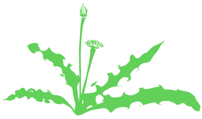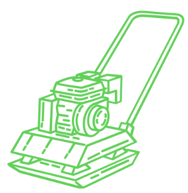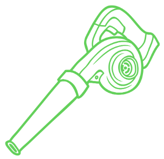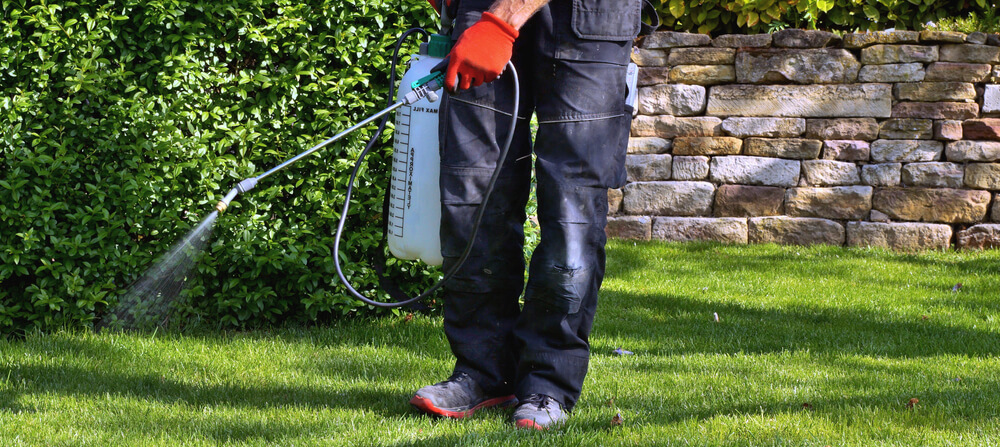Will Weeds Grow through Your Artificial Grass?
Jun 01, 2023 | Artificial Grass for Homes, Turf Maintenance and Care

Artificial grass enthusiasts are locked in a heated debate about weeds. While some believe that properly-installed synthetic turf is impervious to weeds, others argue that this assumption is not entirely accurate.
So, what does effective control of weeds in artificial turf look like?
Is achieving an utterly weed-free lawn even possible?
This article will explore these issues and provide insights into effectively controlling and preventing weeds in artificial turf.
Can weeds grow through artificial grass?

Proper installation involves removing weeds and a substantial layer of soil, which is then replaced with class ii road base.
Our turf’s backing facilitates water passage while impeding weed growth upward. It also deters soil contamination of the sub-base and soil migration during heavy rainfall.
Proper installation helps prevents weeds from sprouting through your turf.
Turf Installation
 When inexperienced installers handle the turf, potential problems can arise.
When inexperienced installers handle the turf, potential problems can arise.
Biltright Turf, a professional installer of artificial grass, recommends the following procedure before laying down your synthetic turf.
- Remove 2 to 4 inches of existing sod and dirt
- Disable any sprinklers, and set a rough grade for drainage purposes
- Then, lay 3 inches of aggregate base material
- Hose down and use a vibrating plate compactor to compact to 90% of the original volume
- You may then lay the artificial turf
Edging
Edging your artificial lawn is an excellent way to structure its borders and give it a sense of definition.
Edging offers much more than a clean aesthetic. A significant advantage of edging for synthetic turf is the ability to prevent weed growth, particularly where the artificial grass meets a different landscaping feature such as the corner of your brick patio.
Regular Maintenance
 An often-repeated myth is that there’s zero maintenance necessary to keep artificial turf free from weeds. The truth is that occasional cleaning and maintenance of artificial grass will go a long way toward preventing weed growth.
An often-repeated myth is that there’s zero maintenance necessary to keep artificial turf free from weeds. The truth is that occasional cleaning and maintenance of artificial grass will go a long way toward preventing weed growth.
Once artificial grass is installed in your lawn, you should regularly brush it with a stiff broom or plastic rake. Avoid cleaning your lawn with a metal rake since it will potentially damage the synthetic grass blades.
Besides removing leaves, weeds, and other types of debris, brushing artificial grass redistributes the infill and prevents blades from flattening. That maintains the overall longevity of the installation.
You could also keep synthetic grass clean using a vacuum cleaner blower or a regular leaf blower.
However, be careful not to blow away the infill.
Can weeds grow on top of artificial grass?
While the risk of weeds is decreased with your new Biltright lawn, there are some instances where they can still pop up.
You may have blown the “petals” off a dandelion as you make a wish, but you may not realize that you’ve scattered seeds. This is how many weeds spread, carried by animals, clothing, or drifting in the air, ultimately landing on the infill where they begin to grow. These weeds grow from the top and are challenging to prevent.
Nevertheless, these weeds have shallow roots, making them reasonably easy to remove. All it takes are a few plucks, or a basic weed killer to kill these weeds and not harm the turf.
Invasive weeds such as nutsedge will require a series of treatments from a professional. These weeds can grow through the backing of the turf and should be treated immediately.
If you neglect regular maintenance of your turf, soil, and mulch may accumulate on top of the artificial grass, leading to the growth of weeds.

How can you prevent the future growth of weeds?
A quick Google search for how to prevent weed growth on artificial grass yields dozens of ideas, many of which are ill-advised. Here are some of the most common proposals:
Sprinkle Table Salt
 This is both true and a myth. Salt does make a great weed killer (herbicide), as it will kill just about anything that grows. However, it is so toxic it can’t be recommended in most garden settings.
This is both true and a myth. Salt does make a great weed killer (herbicide), as it will kill just about anything that grows. However, it is so toxic it can’t be recommended in most garden settings.
Never use salt if you are planning to remove artificial turf. Salting will kill plants for months, years, even decades: a scorched earth policy for plants that leaves the ground barren for ages.
What’s more, water runoff could carry the salt to any plants growing nearby.
Lastly, salt can corrode concrete, bricks, and paving stones, so this method is not recommended.
Use a Weedkiller
Weed-killing herbicides like RoundUp will almost certainly kill weeds in your artificial lawn. However, children love to go outside to play while pets like dogs are always smelling, licking, or rolling around in the grass.
Research shows that most effective weed-killing pesticides have powerful, toxic chemicals that could harm your children or pets.
For this reason, most herbicides indicate that you should wait at least 24 hours before letting your pets play on the treated area of your lawn. The same rule would undoubtedly apply to children.
Vinegar
Instead of spending money on toxic chemicals to kill weeds on your lawn, you can mix up a much safer and environmentally-friendly option with ingredients already in your home.
A mix of vinegar and dishwashing soap is a highly effective solution that works as follows: dish soap breaks down the outer coating of the plant’s leaves (cuticle), so the acetic acid contained in vinegar can dehydrate the weed.
Boiling water
Pouring boiling water over weeds growing in your artificial grass is a safe and highly effective method to control wayward plants. The heat causes instant shock, destroying the plant’s tissues and resulting in withering within a day or two.
However, boiling water is a contact “herbicide” that only kills the part of the plant with which it comes in contact, so the roots may need multiple treatments to ensure that the weed doesn’t grow back.
Keep Your Turf Beautiful and Weed-Free
To avoid weeds, it’s vital to entrust your artificial turf installation to experts with the skills and experience necessary to get everything done correctly from start to finish.
But how can you tell which artificial turf installers are qualified to do the job properly?
To find out, download our eBook “An Expert’s Guide to Comparing Artificial Grass Installers.”


